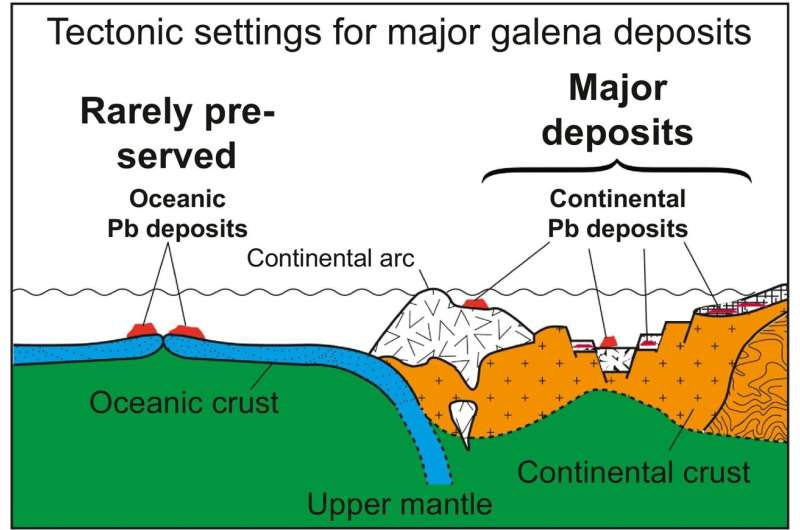This article has been reviewed according to Science X's editorial process and policies. Editors have highlighted the following attributes while ensuring the content's credibility:
fact-checked
trusted source
proofread
New research dates the formation of Earth's continents

Researchers at Curtin University have established a new framework for dating the Earth's evolution including the formations of continents and mineral deposits.
The research, published in Earth Science Reviews, studied Australia's abundant lead-zinc ore deposits along with a vast global database and determined that 3.2 billion years ago was a critical point in the Earth's history when the Earth changed from a layer-cake structure to a mode of remixing possibly driven by the start of global-scale plate tectonics, a process that still dominates the Earth system today.
Lead researcher Dr. Luc Doucet, from Curtin's Earth Dynamics Research Group, said that one of the main questions they aimed to answer was when the continents as we know them today were first formed.
"To answer this question, we had to determine when the composition of the continental crust began to significantly differ from that of the Earth's mantle where the continental material was extracted from," Dr. Doucet said.
"The challenge was that we first need to understand how the Earth's mantle evolved since the Giant Moon formation impact 4.5 billion years ago, when a giant asteroid collided with proto-Earth and modified Earth's core and mantle. We need to reconcile this well-established theory with the composition of the present-day mantle.
"We used lead isotope compositions from rock samples across space and time, including primitive meteorites that were formed at the same time as the solar system and various components of the Earth's layers, to re-construct the Earth's mantle evolution."
Co-author Dr. Denis Fougerouse, from Curtin's School of Earth and Planetary Sciences, said they could now compare the Earth's mantle evolution with that of the continent by using measurements from large lead-zinc deposits, known for tracking continental crust composition through time, and Australia is endowed with abundance of such deposits.
"Australia has an estimated 52 billion [metric] tons of lead-zinc ore, making it the second-largest reserve in the world, just behind China. They range from as old as 3.4 billion years in Western Australia's Pilbara region to relatively young deposits at 285 million years, making them perfect for our study," Dr. Fougerouse said.
Fellow co-author Dr. Hugo Olierook, from Curtin's John de Laeter Center, added that the team's analysis revealed that lead-zinc deposits started to exhibit significant differences from the Earth's mantle about 3.2 billion years ago.
"This period is considered to be the point at which plate tectonics began to be the dominant driver of continent formation on Earth. Earth is the only planet in our solar system that has plate tectonics and, perhaps not coincidentally, the only planet capable of hosting life," Dr. Olierook said.
A spin-off product of this ground-breaking research is that researchers will need to calibrate the radiometric ages they acquired for dating Earth evolution and mineralization events in the future using the newly established uranium-lead isotopic system curves by the Curtin group.
More information: Luc S. Doucet et al, The global lead isotope system: Toward a new framework reflecting Earth's dynamic evolution, Earth-Science Reviews (2023). DOI: 10.1016/j.earscirev.2023.104483
Provided by Curtin University





















